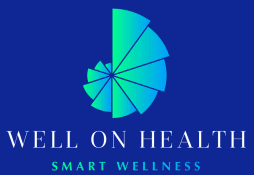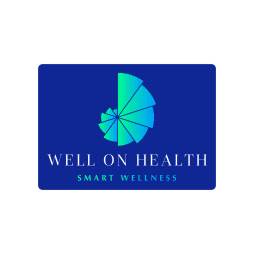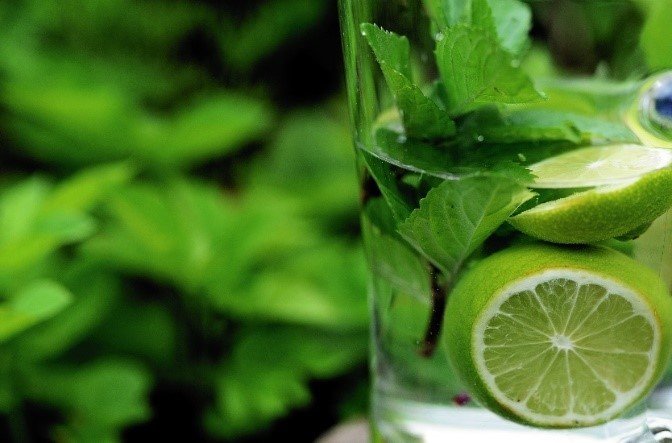Cleansing and detoxification are practices that have been utilized and implemented in ancient medicine traditions including Ayurvedic medicine and Chinese medicine. During the cleansing process, the focus is on resting and eating mindfully or fasting while nourishing the body and healing from the inside out. In our comprehensive guide, you’ll find a complete plan for detox diet and cleansing.
Cleanses and detoxes not only work on a body level but also can offer purification of the mental and emotional body. Many traditions also incorporate yoga, meditation, relaxation, and other techniques to calm the system and promote healing.
When the body is under stress it will have a hard time healing, but when the body is relaxed, the healing mechanisms can begin to take place and facilitate healing in the body through cleansing and detox.
The body has many ways of detoxing itself and the body was designed with organs specifically to support the detoxification process. The liver works to break down toxins and other elements that are consumed or contacted, while the kidneys metabolize and excrete waste from the body through the urine. The skin is also a detoxification organ where toxins are released through the sweat.
Detoxification or a “detox” may include one or more of the following practices: fasting, drinking only juice or other beverages, eating certain foods while eliminating others, using herbs, engaging in colon cleansing, eliminating environmental exposures to toxicity, or utilization of a sauna. The goal of detoxification is enhanced functionality of the liver, kidneys, and other organs that excrete toxins.
Cleansing is a form of mindful eating which includes repairing the gut health. Cleansing can include cutting out certain inflammatory foods like eggs, gluten, dairy, sugars, processed foods, and more. Cleansing is a process that facilitates detoxification by eliminating allergens and implementing more mindful eating.
Disclaimer: This guide is for informational purposes only and is not intended as medical advice. Medical advice should always be obtained from a qualified medical professional for any health conditions or symptoms associated with them. Every possible effort has been made in preparing and researching this material. We make no warranties with respect to the accuracy, applicability of its contents, or any omissions.
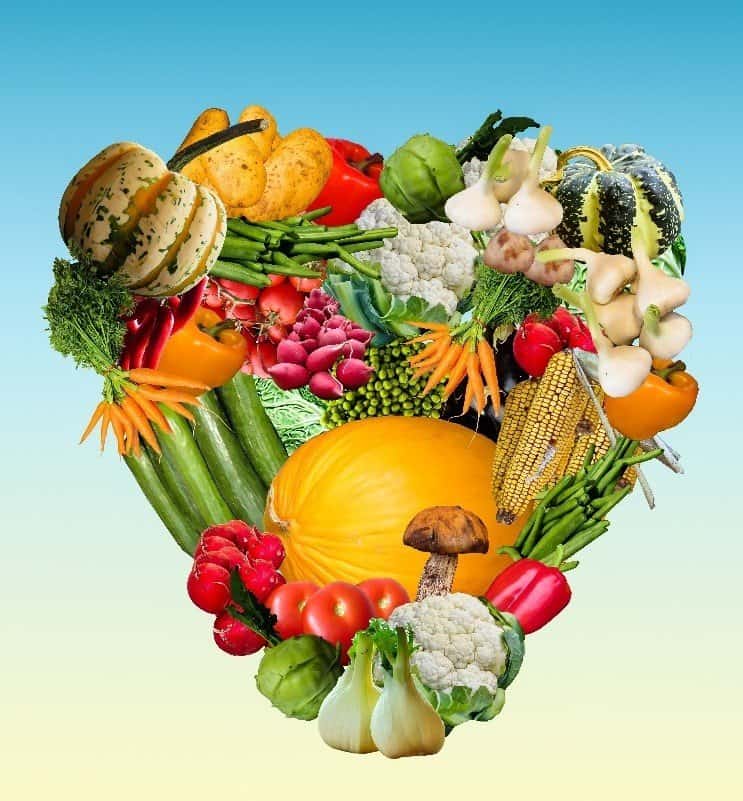
How Detoxification Happens
The process of detoxification means cleansing of the bloodstream. The process of detox is done by removing toxins from the liver. The liver is the organ where toxins are trapped and removed from the blood and then eliminated from the body.
The body utilizes various organs to eliminate toxins from the body. The kidneys, lungs, intestines, skin, and lymphatic system are all part of the elimination system that will remove toxins from the body.
The goal of a cleanse is to purify organs to improve their function and ability to eliminate toxins from the body.
Participating in a full body detox facilitates the body’s natural cleaning and the cleansing process by allowing the organs to rest through fasting and caloric restriction. Cleansing stimulates the liver to release toxins from the body.
Some toxins have been lodged in the body for many years and doing a deep cleanse is essential for health benefits. Cleansing also encourages elimination through the intestines, kidneys, and skin. Cleansing can also purify and improve blood circulation. Adding a healthy diet to the cleanse will also contribute to an overall healthy internal environment.
Reasons For Cleansing And Detox
Detoxing is not appropriate for everyone and is best for people who are in moderately good health. It is not advised for those who are pregnant, suffer from chronic degenerative disease, cancer, or tuberculosis. The detox process is also not appropriate for children.
Always consult a professional healthcare practitioner to confirm your eligibility for detox. Continue professional oversight of the process to ensure you are cleaning and detoxing in a healthful way.
Cleanses and detox diets are performed for various reasons, mainly it is to heal the body and eliminate toxins. Johns Hopkins Medicine, one of the leaders in revolutionary medicine, has endorsed Ayurveda, a form of ancient healing and alternative medicine that originated in ancient India. Ayurveda starts with a period of cleansing or detoxification.
May Address Various Conditions And Yield Benefits For The Body And Mind
- Eliminate toxins
- Fatigue
- Slow elimination, bloating, and constipation
- Improve digestion
- Skin irritations and conditions, such as acne
- Identify allergies and food sensitivities
- Brain fog
- Stress
- Reducing inflammation from a poor, processed, and junk food diet
- Boost nutrient intake from whole food, such as key vitamins and minerals from fruits and vegetables
- Helps to kickstart a weight loss plan
- Helps to kickstart an overall healthy lifestyle
- Helps to detox from a lifestyle of junk food and processed food and reset the body and mind towards healthier living
- Besides just helping which physical ailments, Chris Strychacz, a psychologist at the Naval Health Research Center, has found that specific types of detox diets can also help keep the mind healthy.
Some experts believe there are cons to detox diets and cleansing. According to The Cleveland Clinic, and registered dietitian Kate Patton, “these diets are low in calories, which will leave you with little energy to exercise and may disrupt your metabolic rate and blood glucose levels. You may experience gastrointestinal distress and frequent bowel movements. Detox diets are low in protein.”
When done safely and correctly, participating in a detox offers a way to cleanse the body and develop a healthier approach to life in general.
Short-term detoxes can be beneficial but like crash-diets, they can also sometimes do more harm than good. When we think of detoxing, we want to be sure to include a long-term plan for making future and long-term healthy choices in our diet and lifestyle.
When we transition to a healthier lifestyle we will experience shifts in energy, health, and mentality. A detox will clear the pathway for the body to function more optimally, allowing the gut to release toxins and absorb nutrients and hydration through proper elimination.
A healthy lifestyle will reduce the need for regular detoxing and will instead maintain a threshold of health for ultimate benefit.
Overview Of How To Do A Detox
The first step to starting a detox is to eliminate toxins from the diet and to lighten any toxic load.
The first step is always to remove major toxins and disease-causing agents including alcohol, coffee, cigarettes, junk and processed food, saturated fats, unpurified water, and refined sugars. All of these toxins are barriers to wellness.
We also need to consider household products that have chemicals and other toxic elements. Many household products including shampoo and conditioner, deodorant, toothpaste, as well as chemical household cleaners for the home can be very disruptive to the body and can impact the hormones, endocrine system, neurology, and entire system of the body causing dysregulation.
When hormones are disrupted, this can cause the body to trigger and release stress hormones into the system. These hormones are essential for protecting the body, but in excess amounts, hormones can slow down the detox process and impact our ability to cleanse the body.
When the body is in fight or flight mode adrenaline and other hormones are pumping through the body allowing us to run from a threat or escape being chased. Having high-stress levels can impact the ability of the liver to detox.
11 Ways To Live A Cleansing and Detox Lifestyle
Lemon Water
Begin each day with a glass of either warm or cold water and fresh lemon juice, peel, and all. Lemons have pectin which promotes sound digestion, making lemons a natural detoxifying food. And yes, feel free to sip on that lemon water throughout the day.
Healthy Diet
“Doctors are learning that one of the best ways to reduce inflammation lies not in the medicine cabinet, but in the refrigerator. By following an anti-inflammatory diet, you can fight off inflammation for good.”
Eating an anti-inflammatory diet is essential for maintaining a healthy body and is especially important after a detox. Anti-inflammatory foods consist of whole foods that are filled with nutrients. Foods that are full of fiber are great for flushing out the elimination system and preventing blockage and buildup of toxins.
Fibrous foods include
- Fresh fruit
- Fresh vegetables
- Beans
- Nuts and seeds
- Whole grains
Eating clean with whole food improves gut and liver health and promotes the highest level of functioning throughout the entire body.
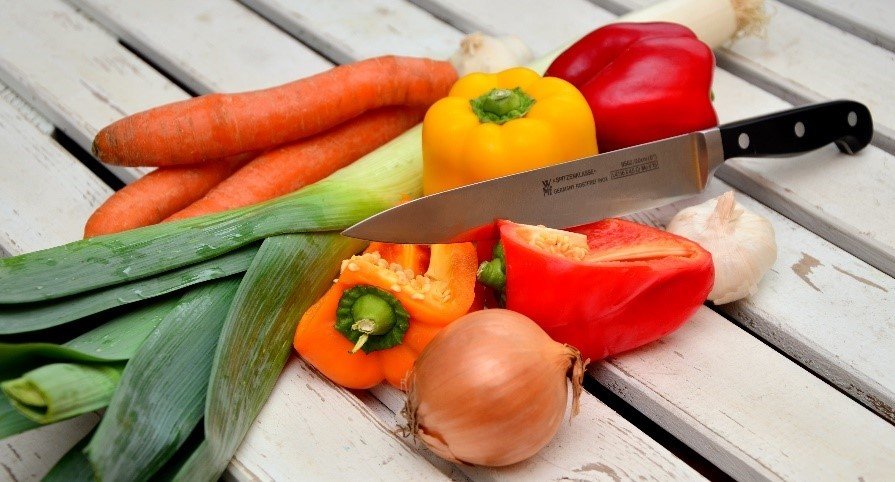
When eating an anti-inflammatory diet, it is important to eliminate unhealthy food choices including:
- Sugar and sugary foods, like sweets
- Fried foods
- Excessive red meat
- Processed food and junk food of any kind
Eating smaller portions of food can also allow the digestive system time to rest and reset. Small meals should be eaten slowly to bring a sense of fullness and greater satisfaction.
Celery Juice
When considering living a detox lifestyle, one important consideration is celery juice. Celery juice will not help clean toxins from your body, but what it is very good at is supporting optimal digestive health.
According to Harvard Health, “Your digestive system breaks down foods and liquids into their chemical components—carbohydrates, fats, proteins, and the like—that the body can absorb as nutrients and use for energy or build or repair cells.”
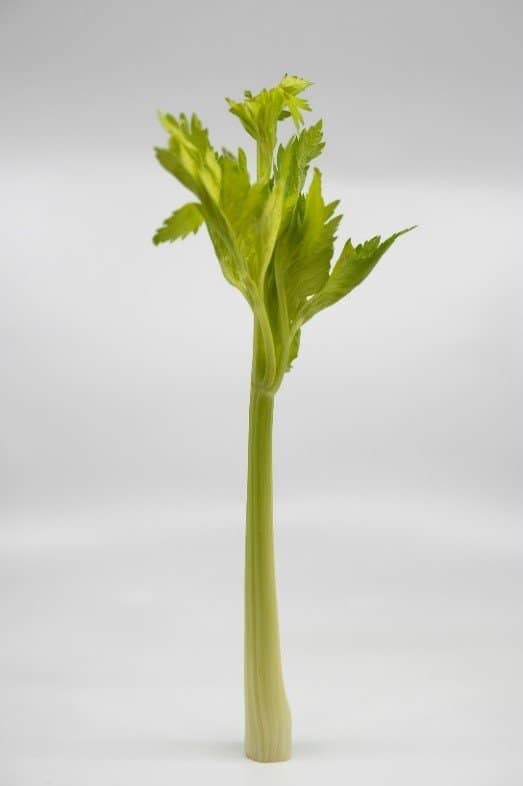
Poor digestive health can lead to acid reflux, constipation, poor gut health, IBS, and other conditions, all of which can make you feel awful, ruin your days, and drag you down.
Celery Juice Nutrition
Celery juice offers you a ton of key nutrients per serving, and much more than eating celery stalks.
Nutrition Per 1 Cup Serving
- 42.5 Calories
- 2 grams of Protein
- 9.5 grams of Healthy Carbs
- 5 grams of Sugar
- 7% DV of Vitamin A
- 16% DV of Vitamin C
- 74% DV of Vitamin K
- 8% DV of Calcium
- 7% DV of Magnesium
- 5% DV of Phosphorus
- 14% DV of Potassium
And if that’s not enough, it is also a rich source of
- Copper
- Folate
- B Vitamins
- Biotin
- Zinc
- And various antioxidants
Health Benefits Of Celery Juice
Celery juice provides key benefits for your health when included in your healthy diet.
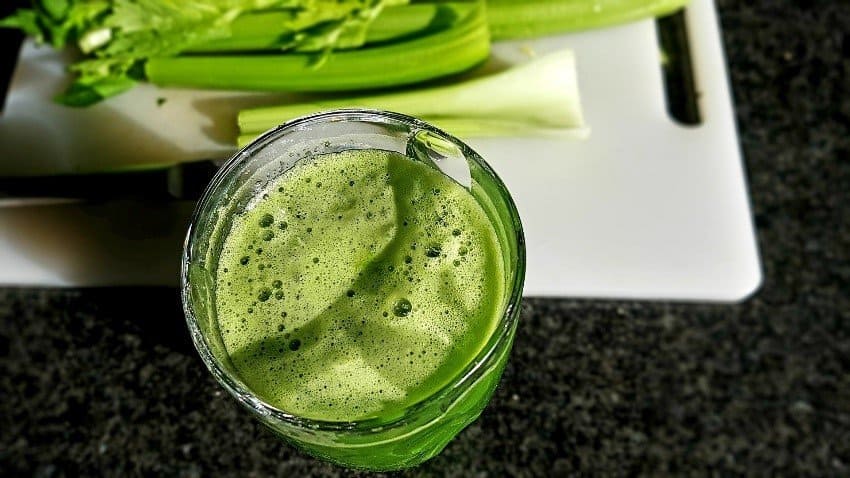
Super Hydration
Celery is almost all water so it greatly boosts hydration levels in the body. Hydration supports the body in numerous ways including optimal brain function, blood pressure, bowel movements, and kidney health (Water, Hydration and Health; Popkin, et al).
Supports Digestive Health
According to Forbes Magazine, “If you have digestive issues, constipation, bloating or any sort of stomach issue, adding celery juice to your diet can potentially reverse these problems. This is because celery contains hydrochloric acid, which restores function and helps heal the gut.”
Celery juice helps increase stomach acid levels which means the body has to use less energy to digest food, allowing you to feel refreshed and more energized.
According to Forbes, “celery juice can also be incredibly helpful for people prone to ulcers and acid reflux by increasing gastric mucus.”
Anti-Inflammatory Properties
According to Healthline, celery juice is a key source of plant compounds called phytonutrients, which help reduce inflammation in the body by reducing oxidative stress caused by free radicals.
How To Drink Celery Juice
Don’t dilute the power of this plant potion, instead of juice celery yourself on its own without added fruits or vegetables.
Use organic celery whenever possible or if not wash it very well. Make it yourself with a juicer and drink it fresh first in the morning on an empty stomach. Eat your breakfast about 15 minutes after drinking the celery juice.
About Heavy Metals And Contaminants
Heavy Metals
In this current day and age, if you live on planet earth, it’s likely you have some heavy metals and other contaminants in your diet. And if these toxins pile up too much in your body, they could cause dangerous side effects like auto-immune diseases.
According to the Food And Drug Administration (FDA), “Certain metals, such as arsenic, lead, and mercury, have no established health benefit and have been shown to lead to illness, impairment, and in high doses, death. Understanding the risk that harmful metals pose in our food supply is complicated by the fact that no single food source accounts for most people’s exposure to metals in foods. People’s exposure comes from many different foods containing these metals. Combining all of the foods we eat, even low levels of harmful metals from individual food sources can sometimes add up to a level of concern. “
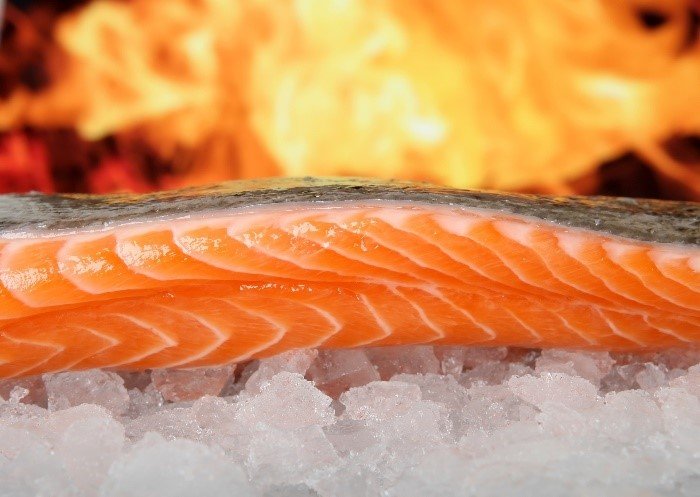
The reality is that our food supply contains metals, including lead, arsenic, and mercury because these natural environmental pollutants are found in water, soil, and the air and so they enter food supplies through those elements when plants absorb them as they grow.
Fish is a good example, which contains high levels of mercury from the water they swim in, and so experts recommend eating fish only two times per week to reduce intake of mercury.
The FDA has created a workgroup to monitor metals in food and to protect all populations, especially the most vulnerable who are children. It is important to be aware of the metals in food and to take precautions as needed in your diets.
Mercury
Fish from the ocean contains a large amount of natural mercury. Although a small amount of this is easily eliminated by the body, if you are starting on a journey to completely clear your diet of heavy metals, any ocean-caught fish needs to go.
Consider purchasing ethically farm-raised fish instead. Limit fish to 2 meals a week.
Lead
Lead is a metal that has proven toxic in high doses, leading it to be highly controversial in recent history.
According to the USDA, “Lead is a poisonous metal that is harmful to the body. Lead poisoning is most dangerous to young children and unborn babies. Small amounts of lead can seriously affect their health.”
The FDA reports that most intentional uses of lead are now banned in the United States, for example, the previous use of lead in paint.
Lead In Canned Food
According to the USDA, “The canned food industry in the United States stopped using lead-soldered cans in 1991. In 1995, the Food and Drug Administration issued a final rule prohibiting the use of lead solder in all food cans, including imported products.”
But lead can still be found in food due to its presence in the environment:
- Lead from soil can be absorbed by vegetable and fruit crops, this lead is cannot be completely eliminated by washing the produce.
- Lead found in plants, and water may be eaten by animals which we then eat.
What You Can Do
- Increase your intake of iron, calcium, and vitamin C, as these nutrients aid the body in absorbing less lead.
- Gardening – If you are going to grow your own produce make sure to test your soil for lead levels. Root vegetables, like carrots and sweet potatoes, are at the highest risk, since they have direct contact with the soil. According to the Soil Science Society of America, this risk is highest in home gardens.
- Avoid sweets imported from outside of the US that contain tamarind, chili powder, and salt which has been mined outside America.
- A 2015 article in the Washington Post reported concerns about the lead content in chocolate. While that content within FDA requirements, the concern is when we eat too much chocolate lead can build up over time.
- Reduce consumption of tap water. According to the Environmental Protection Agency (EPA) the risk of high led consumption can be especially high when the home has lead pipes or fixtures.
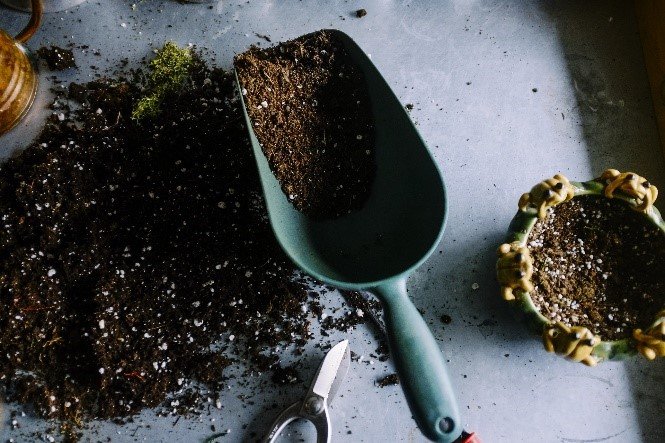
Heavy Metals In Popular Bottled Fruit Juices
Beware of bottled fruit juices. In 2019, Consumer Reports published findings after they tested 45 different fruit juices for heavy metals and found that almost 50% of those contained unsafe levels of mercury, lead, cadmium, and inorganic arsenic.
“Five of the juices we tested pose a risk to adults at 4 or more ounces per day, and five others pose a risk at 8 or more ounces,” said Consumer Report’s chief scientific officer, James Dickerson.
Many of these heavy metal ladened juices are popular and very well-known brands.
Aluminum
“Aluminum is one of the most common metals found in the environment and consequently, in food. However, Al levels have been increasing over time due to acidification of the soils and anthropogenic activities. Al is a known neurotoxic agent because this metal tends to accumulate in the brain. Several studies have reported the correlation between Al levels and different diseases such as Alzheimer’s disease.” (Aluminum Exposure Through the Diet, Hardisson, et al: PDF)
A report from the Federal Institute for Risk Assessment (BfR) in Berlin reports that even though aluminum exposure from dietary sources is on the decline, human beings are still ingesting too much aluminum from nonfood sources which is a health risk.
Medical News Today says that cosmetics and antiperspirants, might just be exceeding the levels of mercury humans can tolerate. Experts advise that eating a varied diet and alternating brands can help reduce aluminum exposure.
Healthline advises the following to reduce aluminum exposure:
- Don’t use aluminum utensils
- Don’t use aluminum utensils in cooking
- Don’t mix aluminum foil with acidic foods, including tomato sauce and chicken
- Limit the amount of tap water you drink
Arsenic
According to the World Health Organization, “Arsenic is a natural component of the earth’s crust and is widely distributed throughout the environment in the air, water, and land. It is highly toxic in its inorganic form. People are exposed to elevated levels of inorganic arsenic through drinking contaminated water, using contaminated water in food preparation and irrigation of food crops, industrial processes, eating contaminated food, and smoking tobacco.
Long-term exposure to inorganic arsenic, mainly through drinking-water and food, can lead to chronic arsenic poisoning. Skin lesions and skin cancer are the most characteristic effects.
The greatest threat to public health from arsenic originates from contaminated groundwater. Inorganic arsenic is naturally present at high levels in the groundwater of a number of countries, including Argentina, Bangladesh, Chile, China, India, Mexico, and the United States of America.
Fish, shellfish, meat, poultry, dairy products, and cereals can also be dietary sources of arsenic, although exposure from these foods is generally much lower compared to exposure through contaminated groundwater. In seafood, arsenic is mainly found in its less toxic organic form.”
Drinking purified water is your best line of defense against arsenic contamination. The WHO reports that at least 140 million people from 50 different countries drink arsenic-contaminated water with levels higher than the WHO recommended level of 10 μg/L.
Contaminants/Pesticides
The most common contaminant in the American diet is pesticides, which are commonly found on fruits, vegetables, and grains.
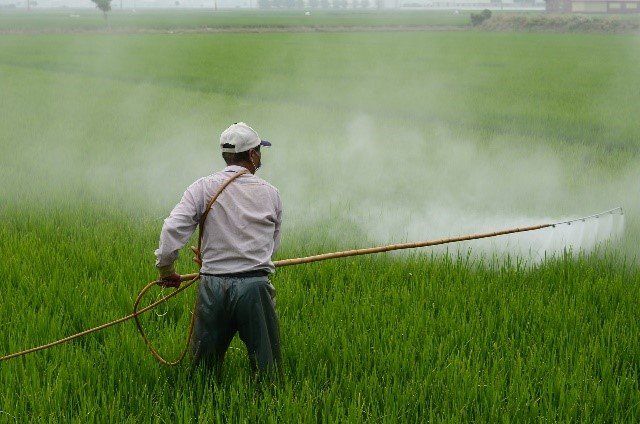
Every year the EWG puts out its Dirty Dozen List, which is the list of produce highest in pesticide residue, the year 2020 list is as follow:
- Strawberries
- Spinach
- Kale
- Nectarines
- Apples
- Grapes
- Peaches
- Cherries
- Pears
- Tomatoes
- Celery
- Potatoes
- Hot Peppers
Source: https://www.ewg.org/foodnews/dirty-dozen.php
Reduce Pesticide Intake
- Remove the produce above from your diet and buy only fruits and vegetables with a peel that is removed discarded before eating.
- Purchase organic produce for the list of choices above especially, as well as other products where there is no peel or you eat the peel.
- The only way to avoid grains that have been treated with pesticides is by purchasing organic grain products.
Overall, eliminating all the heavy metals and toxins from your diet is going to be challenging. But steps can be taken to make your diet safer and to minimize exposure.
Eliminating Allergens
Many people have food allergies that go unrecognized because they can be difficult to identify. Some allergies are obvious and serious and lead to difficulty breathing and swelling, but others are more subtle and trigger an inflammatory response that can lead to systemic inflammation.
This is known as a food sensitivity and can be much more difficult to identify. This systemic inflammation can lead to symptoms like diarrhea, eczema, arthritis, migraines and more.
There is a large possibility that you are allergic to one or more foods in your diet. It’s easiest if you remove all of these products from your diet, but you can also try eliminating one at a time and see if you feel better.
Common Food Sensitivities Include
- Corn
- Soy
- Gluten
- Dairy
- Shellfish
- Eggs
- Caffeine
- Beef, Pork, and Lamb
- High FODMAP Foods – certain carbs in food that are osmotic, fermentable, osmotic, and poorly absorbed leading to digestion issues.
Source: https://www.verywellhealth.com/most-common-food-sensitivities-1944845
An elimination diet or cleanse can help identify these culprits. Consider taking all of these foods out of the diet for a few weeks and then adding food from each category back into the diet slowly.
Sugar-Free
Eliminating sugar from the diet is an important aspect of maintaining your detox. Sugar is a difficult ingredient for the body to process because it is unnatural and can upset blood sugar levels in the body. When the blood sugar levels are imbalanced the body will need to use extra energy to stabilize the blood and energy will be taken from detoxification and other essential processes.
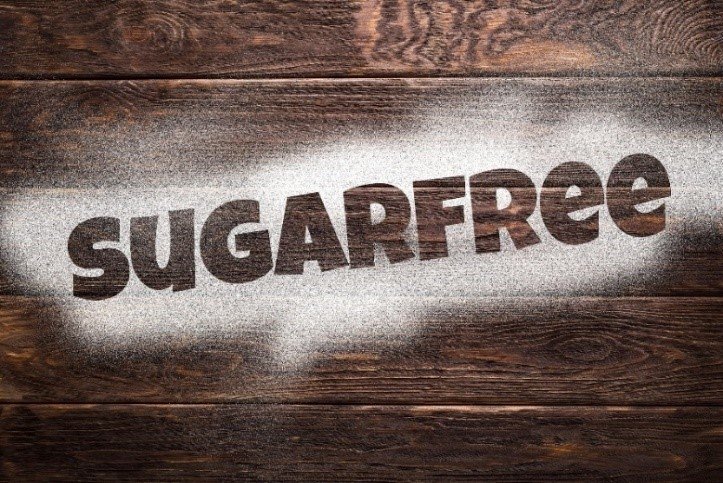
According to WebMD, a high-sugar diet can also cause weight gain and this can lead to long-term chronic disease, including type 2 diabetes, heart disease, metabolic syndrome, and increase risks of cancer.
“Too much added sugar can be one of the greatest threats to cardiovascular disease.”
Alcohol Limitations
It is essential to eliminate alcohol from the diet during a detox. The liver is the organ most impacted by alcohol and it is the main place where toxins are processed. When doing a detox, the liver should get a break from processing anything that is detrimental to health.
Antioxidants
Consuming antioxidants can assist in repairing cellular damage and can benefit the body by neutralizing free radicals. These free radicals are disease-causing unstable molecules that are formed when the body undertakes certain processes.
Free radicals lead to oxidative stress which can damage the cells and lead to various diseases including cardiovascular disease and diabetes, Alzheimer’s, and Parkinson’s disease.
Hydration
Drinking enough water will help to hydrate the body and allow the body to participate more fully in the detox process.
- Drinking warm water with lemon upon waking is recommended to begin the digestive process and gently warm the stomach.
- Herbal teas are another healthy way to hydrate and have been taken for centuries for health maintenance.
- Green tea is full of antioxidants and is a cooling tea great for the summer months.
- In wintertime, warming herbs and spices like ginger, cinnamon, and chai are good options for hydrating and warming the body.
Exercise
Participating in exercise on a regular basis is a great way to improve health. Exercising regularly reduces stress levels and can create more energy in the body. Breaking a sweat during exercise allows the body to expel toxins through the skin and improves blood circulation.
There are many forms of exercise that are beneficial to the body. Biking, walking, swimming, joining a dance class, hiking, or other activities are all great for adding movement to life in a slow and steady manner for a true lifestyle change.
Sleep
During restorative sleep, the body can begin to repair cellular damage from toxins and the brain is allowed to rest. Sleeping well is essential for proper brain functionality because the brain needs time to rest and regenerate each day.
How Much Sleep Do You Need?
The SleepFoundation.org recommends the following guidelines:
- Young Adults 18-25 – 7-9 hours
- Adults 26-64 – 7-9 hours
- Adults 65 + – 7-8 hours
“Deciding how much sleep you need means considering your overall health, daily activities, and typical sleep patterns.”
The Sleep Foundation recommends you assess your needs by following your productivity levels and increasing sleep as needed. Another consideration is how much caffeine you need to get through the day, which can be an indication that you need more sleep. Those with high energy expenditure may also consider the need for more sleep.
8 Types Of Cleanses
Sugar Detox Cleanse
Doing a sugar detox is the easiest way to detox your diet without making too many adjustments. In a sugar detox, you will remove all refined and processed sugars from the diet and will also forego natural sweeteners like honey, maple syrup, cane sugar, and other sweeteners during the detox.
Sugar disrupts the blood sugar levels in the body leading to crashes and cravings that can never be satisfied because the body will always be asking for more sugar as it is an addictive substance.
When cutting sugar from the diet, you may experience irritability or some mild to moderate side effects during the first few days of detox.
This is normal as the body has become accustomed to the intake of a large amount of sugar in the Western diet and will need time to adjust to a new whole food diet without added sugars. During this detox diet, you can drink herbal tea and be sure to drink plenty of water to stay hydrated and prevent headaches.
Doing a sugar detox is the first step in cleansing the body and eliminating cravings. This detox will make the following detoxes more accessible because the body will be cleared of its sugar addiction. Breaking the dependency on sugar is the first step to successful detoxification.
Cleanses For Identifying Food Sensitivities
Do you often not feel well after a particular meal? Or are you always not feeling well after eating? It’s likely you could be suffering from food sensitivity and just not know it yet. There are a number of ways to discover your food sensitivities, but the easiest way is through a cleanse.
Elimination Phase
The first step to identifying what food, or foods, maybe causing you issues, is by eliminating a large number of foods from your diet. Most nutritionists recommend eating a diet of only fruits and vegetables in the initial, or elimination, phase.
According to Dr. Kimberly O’Brien, this elimination phase should last for 11-21 days, and you should eliminate all of the most common food sensitivities, which are dairy, all grains, eggs, corn, soy, legumes, nuts, citrus, and nightshade vegetables.
During this time, this will allow your body to cleanse itself of all of the ingredients in your food that may be affecting you. Continue the elimination phase until you feel better, or 21 days have passed. At the end of 21 days, if you are still experiencing symptoms, what you are sensitive to is likely still in your diet.
The Re-Introduction Phase
After the elimination phase, and if you feel better, it’s time to start reintroducing foods into your diet. At the re-introduction phase, it is critical that you only add one food in at a time. If you add multiple foods at a time, this could cause you to feel ill, and then not know which food caused it. For example, first, you could add only eggs back into your diet.
Then if you are still feeling great a few days later, add grains back in next. Experts recommend waiting 3-4 days between re-introducing each food, as this is the time it will take for your body to feel the full effects of the food.
If at any time during the re-introduction phase you start to experience your previous symptoms, it’s likely you’ve found the culprit. To be sure, remove this food from your diet once more, and wait until you feel better before you try re-introducing any other foods. It is possible to have multiple sensitivities, so even if you find eggs bother you, something else could bother you too, so don’t put everything back in your diet just yet.
Also, if during the re-introductions you have a reaction to a large group of foods such as grains, it may be important for you to narrow down your sensitivity to something more specific such as gluten, or quinoa. To do this, remove the item (in this case grains) completely from your diet once more, then introduce just one food from that group, such as rice, at a time, and see how you feel.
Embarking on a cleanse to identify food sensitivities is no simple task, and as you can see, it can take months to narrow down what is truly causing your distress. But it is worth sticking with it because once you discover your food sensitivities, you will quickly be on your way to living a happy, and healthier life.
Whole Food Cleanse
One of the best cleanses you can ever do is a whole food cleanse. Whole food cleanses are also considered elimination-style diets. There are different variations and strictness levels of these elimination diets, but all involve eliminating all processed and junk food and eating a 100% clean diet. While this can be a short-term reboot to clean your body of all that junk, we ingest on a daily basis, it is recommended as a lifestyle change that will nutrify your body and leave you feeling healthy and energized.
What Is Clean Eating
One of the best and easiest ways to turn your health situation around is by eating a clean diet. And eating a clean diet doesn’t just mean eating less packaged foods, it means eating a diet where you only eat whole foods.
What Eating Whole Foods Means
Eating whole foods means you don’t consume anything which is processed, and that all the ingredients you start within a recipe are the real thing. Anything which is a whole food will not have any ingredients which are chemicals, or that you don’t understand.
And you want to consume these foods as close as possible to their natural state, or the way you would find them in the wild. Anything with added sugars, fats, or chemicals is not considered a whole food.
Eat More Fruits And Vegetables
The easiest way to embark on a whole foods only diet is by loading your diet with lots of fruits and vegetables in their natural state. Instead of reaching for chips or crackers for snacks, reach for carrots, or raw almonds.
If you live a busy life and often rely on fast food for meals, consider meal prepping salads, or roasted vegetables which can easily be warmed up in the microwave when you arrive home from work.
Cook At Home
One of the number one features of whole food, clean eating diet, is you will eat at home significantly more than you eat out. This is because restaurants add lots of non-whole food ingredients like oils, spreads, fats, and sugars to their dishes.
Cooking a fresh meal every night is clearly best, but if you don’t have time, embark on some whole food recipes which you can prep in advance on your days off and enjoy them throughout the week.
General Rules For Whole Food Cleanses
- No sugar of any kind or foods with it – honey, syrup, etc.
- No artificial sweeteners
- No grains of any kind of foods that include them – rice, wheat, corn, and all others
- No legumes – includes all beans, such as pinto, red, lentils, and no nuts
- No dairy of any kind
- No junk food
- No processed food
- No packaged food
- Nothing from the shelf aisles
- Nothing baked or sweets
What does that leave?
- Fresh fruit and vegetables
- Meat, seafood, chicken, and fish
- Natural fats
- Eggs
- Spices, herbs
Overall, eating clean isn’t easy, and this is because most packaged foods are packaged for your convenience. But eating clean, whole foods, is a critical component to living a healthy lifestyle.
Commercial Whole Food Cleanses/Elimination Diets
Again, there are various forms of whole food elimination diets, the following are popular and healthy choices for a whole food cleanse and possible lifestyle as a whole.
- Whole30™
- The Cooking Light Diet
- Cooking Light 3-Day Cleanse
- 2018 Cooking Light Detox
Fruit And Veggie Cleanse
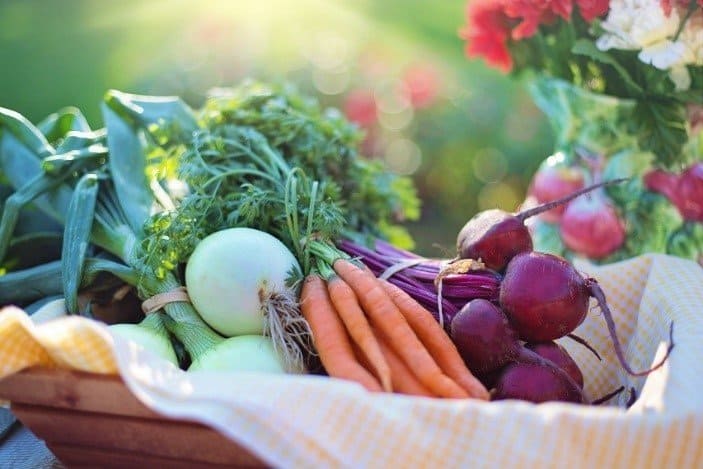
Completing a fruit and veggie detox is one of the most accessible detox protocols to undertake.
- Practicing a fruit and veggie detox involves eating only fresh whole and organic fruits and veggies without grains.
- Fruits and veggies of all kinds are included in the detox and can be eaten raw, steamed, baked, or otherwise.
- It is recommended to lightly steam veggies rather than eating them completely raw and cold because this gives a jump start to the digestion.
When eating cold and raw foods the body has to work to bring the foods to a warm temperature in order to break them down and assimilate nutrients.
It is important to take small bites and chew fruits and vegetables thoroughly to start the digestive process through the saliva and to prevent swallowing too much air when eating. Eating slowly and mindfully allows connection with the meal and also allows the body to register when it is full.
A fruit and veggie detox will leave you feeling more fulfilled than some of the lighter cleanses. The fruit and veggie detox is a good introductory detox on its own or can be used in the pre-cleanse phase for a smoothie or juice cleanse. This can prepare the body for a deeper detox or is the perfect introduction to detoxification diets.
Smoothie Cleanse
Undertaking a smoothie detox cleanse is a great way to increase the effectiveness of fruit and veggie detox by facilitating some of the digestive processes through mechanical mashing of food.
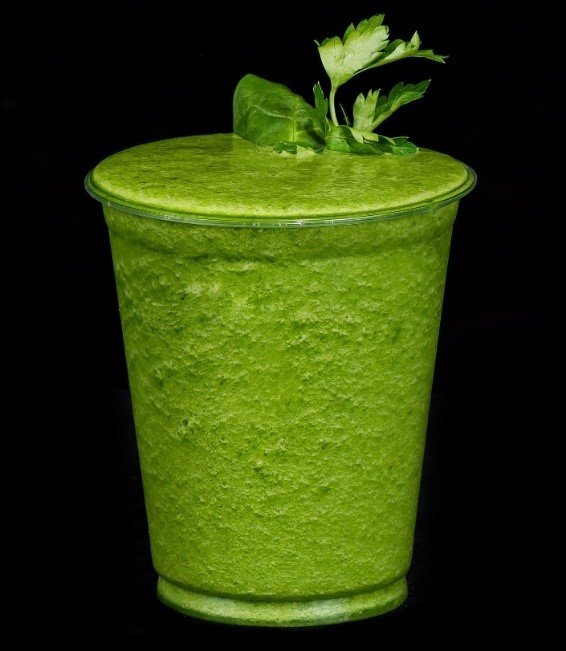
A smoothie detox contains fiber for regulating the immune system and plenty of nutrients for sustenance. Smoothies can be made fresh each day or can be batched into categories based on color or flavor.
- The smoothie cleanse will contain some of the same fruits and vegetables as the fruit and veggie detox, though not all vegetables are great in smoothies.
- Typically, starchy vegetables like potatoes and sweet potatoes are left out of smoothies for detox.
- Watery vegetables like cucumber and celery are more appropriate for smoothie cleansing and can easily be combined with various fruits including berries, melons, coconut spinach, and more.
As long as the ingredients are made from whole fruits and vegetables, it does not matter if they are fresh or frozen. If buying frozen fruits for smoothies, there are various blends available that contain a mix of popular fruits and vegetables.
This is one way to simplify the smoothie detox so you do not need to keep a lot of fresh produce on hand. When all the fruits and veggies are already chopped and combined in the freezer, there can be much less resistance to the process. Simply add some coconut water, hemp seed milk, or other non-dairy and non-soy milk with fruits and veggies in the blender and blend until smooth.
A smoothie cleanse keeps the stomach more fulfilled than juice alone and can be a great middle-ground between fruit and veggie detox and a juice cleanse. You can also use a smoothie detox in the pre-cleanse phase of a juice cleanse to prepare the body and to further facilitate elimination.
Juice Cleanse
Juice cleansing is a form of detoxification and fasting where only juice is consumed for a number of days. A juice cleanse is typically done for 1-3 days but can be extended up to 5 days or a week under proper medical supervision.
Participating in juice fasting for a single day is a good start to introducing the body to fasting. For anyone who is new to cleansing, juice cleansing can be an easy introduction that allows the body to adjust and understand a new way of eating.
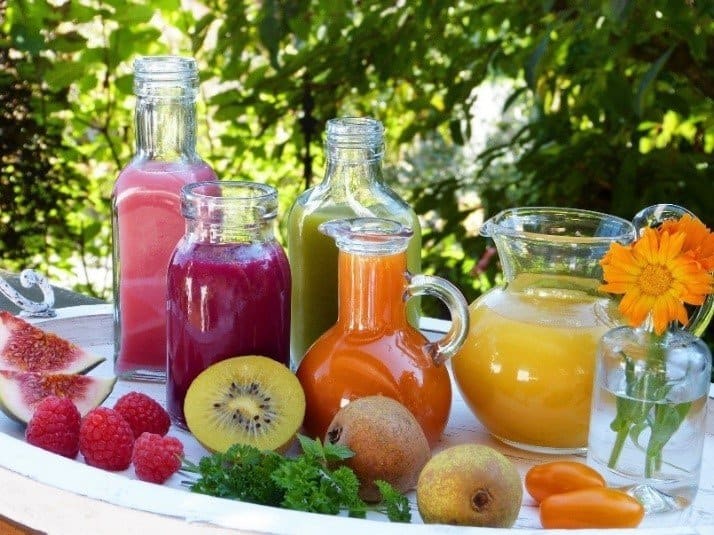
Then, as the body becomes healthier and as a person becomes more accustomed to the shift in diet, additional days can be added onto the fast. Juice cleansing allows the body a digestive reset while providing essential vitamins and minerals that are needed for energy and immunity.
- To complete a 3-day juice cleanse, prepare enough juice for 3 days and drink that instead of food during the timeframe.
- Water and herbal caffeine-free tea can also be consumed to balance hydration. In preparation, it is important to complete a pre-cleanse phase for the 3 days leading up to the juice fast detox. These 3 days of pre-cleansing allow the body to adjust to a reduced caloric intake and to begin to relax the digestive system so it can be clean and cleared before the cleanse.
- Various blends of juice can be created to cover all colors of the rainbow. This will ensure that a wide variety of nutrients are consumed during the detox. A juice that is red in color could contain beets, strawberries, pomegranate, cranberry, or a variety of other ingredients.
- Herbs can also be added to facilitate cleansing including cilantro, parsley, ginger, and turmeric.
- During a juice detox, a person should aim to consume about 6 glasses of juice per day and also drink 6 glasses of water.
- After the juice fast, there will be another 3-day post-cleanse period when light foods like soups, steamed veggies, and other light meals will be eaten. This allows the body to remain in a state of detox and prevents the organs from being overburdened with a big and heavy meal.
- Resist the urge to eat anything too heavy and do not consume any meat for 3 days post juice cleanse. The body has taken a great break from processing heavy, toxic, and allergenic foods. Be sure to treat it gently as you add in new foods to prevent nausea and overeating.
It is possible to purchase specially made juices from a store that will contain all the necessary components for completing the cleanse. These juices can be purchased in bulk and stored in the refrigerator so they are always available at any time. These juices will cover a wide variety of nutrients and will ensure there are no deficiencies or gaps in the diet that could lead to hunger or other difficulties with the detox.
Making juice at home is also an option for those who would like to be more engaged in the process and this is actually optimal as you will be drinking the juice while it is very fresh. There are various types of juices that can be made for detox and many recipes exist that ensure the juice tastes great and covers all essential nutrients. Using a slow juicer is the best option for at-home juicing because it allows some pulp to pass through the juice for added fiber intake.
If you’re interested more in Juice Cleanse you may check our in-depth article: How To Do Guide: Juice Cleanse Focused For Rejuvenation
Hypoallergenic Purge
During a hypoallergenic detox, the focus is on clearing and cleansing contaminants and chemicals from the home.
Cleaning products can be toxic and contain chemicals that can disrupt the systems in the body. These are everyday products we often overlook.
Anything we put on our skin will be absorbed by the largest organ in our body, our skin, and will move rapidly into the bloodstream. When we use lotions, shampoos, perfumes, or other products on our body that contain chemicals, we are using poison. Although the effects may not be as visible or immediate, they can add up over time.
Other products in the home can also be damaging to the system even if they do not touch our skin or body. Some examples include toxic paint, cleaning products, carpets, mattresses, and other products produced with chemicals. These products can be hard to eliminate from the home because many people are so accustomed to using certain products.
It may be overwhelming at first to consider all the chemicals that are leeching from our homes. But, taking one step at a time to clean our homes and the areas we inhabit will go a long way in lowering our toxic load.
- Consider keeping all chemical cleaners outside of the home and in a sealed plastic container. Take the items out only when you need them and use them outdoor or with windows and doors open to let fresh air pass through.
- Next time you go to buy a chemical cleaner as a replacement, consider buying a natural product that will not disrupt the chemistry of your body. Natural cleaners in the home are equally as effective and do not come with as many risks and side effects.
- Consider making your own home cleaners using citrus, vinegar, and essential oils. There are many DIY cleaner recipes online. Making products yourself is a great way to keep track of what ingredients are in your cleaners and is a pathway to healthier living.
Short-Term Fasting
Why Fast?
Fasting, for a short period, is the most effective way to detox. This is because when your body doesn’t receive any food, since it doesn’t have to work to digest new nutrients, it takes this time to cleanse its cells. Instead of adding to the fat cells, it uses stored fat in order to continue functioning.
According to scientist David Andre Sinclair, this short-term fasting helps boost your immune system. And regardless of immune system benefits, you’ll likely feel better after giving your body a short break.
To achieve these types of results, you don’t even need to fast that long, a few days to a maximum of a week is sufficient. It’s important that you don’t fast too long, or too often, as this could have the opposite of the desired effect and leave you feeling out of energy and weak.
So, if you just finished having a crazy weekend that has left you feeling not like your normal self, maybe it’s time to try a short fast. Start with just one day and see how you feel—chances are you’ll probably feel a lot better.
14 Best Detox Foods For Cleansing Diet
Please check our post for 14 Best Detox Foods For Cleansing Diet
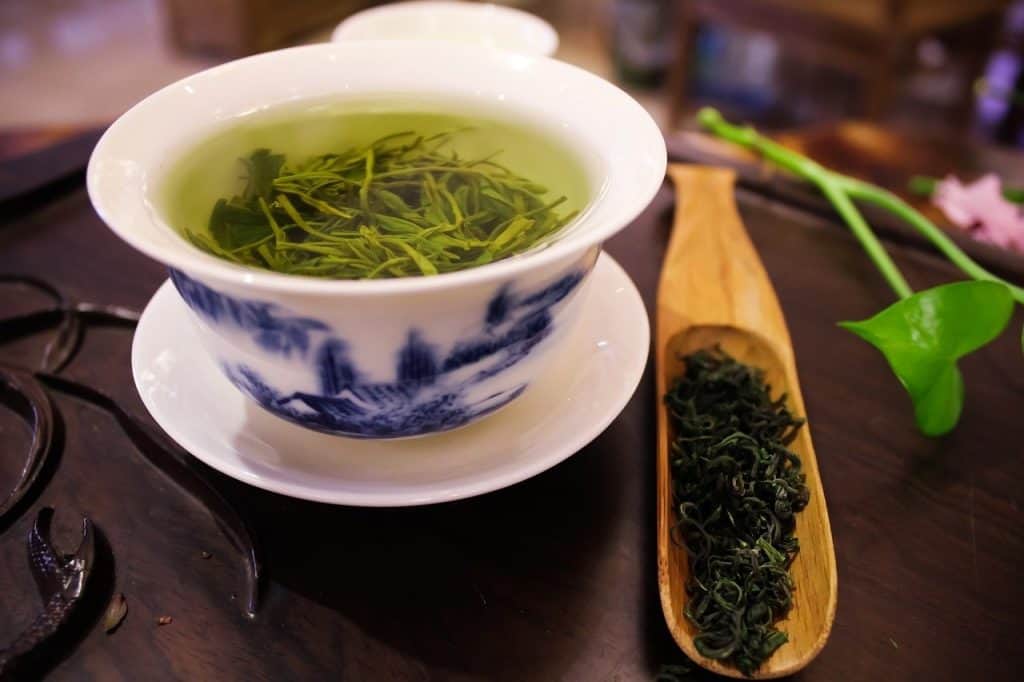
Detox Recap
- For daily detox continue to cleanse and eat healthy, whole clean food with lots of fiber. Include in your daily diet, fresh fruits and vegetables like beets, radishes, artichokes, spirulina, chlorella, seaweed, broccoli, and leafy vegetables.
- Cleansing the liver is promoted through supplements like burdock, dandelion root, and milk thistle. These are incredible purifiers for the liver and the kidneys. Vitamin C will also assist the body in its detoxification process and increases the production of glutathione.
- Drinking detox herbal teas including green tea and dandelion tea will help to purify and cleanse the organs.
- Drinking water is also an essential component for hydration and for releasing toxins from the body. It is recommended to drink at least 32 oz. of water per day and be sure the water is clean, purified, and free of contaminants.
- Releasing and transforming stress is also essential to releasing toxins from the body. Meditation and mindfulness practices can reduce stress and improve clarity and focus.
- Breaking a sweat through exercise or an infrared sauna detoxifies the body through the body’s largest organ, the skin.
- Assisting a detox via herbal foot bath soaks can reduce toxic load and lower stress while improving circulation and excretion of toxins.
Safety Concerns When Cleansing And Detoxing
There have been very few research studies in cleansing and detoxification according to the National Center for Complementary and Integrative Health.
The NIH has stated some concerns to be aware of when participating in a cleanse.
- Some juices used in “detoxes” and “cleanses” are unpasteurized and could be harmful to people with weakened immune systems if the juice does contain pathogens.
- Juices that are made with high oxalate foods like spinach or beets can increase the risk of kidney problems in people who are prone to kidney issues.
- The NIH also recommends that people with diabetes should follow the diet provided by their personal health care practitioner.
- People with diabetes should consult their healthcare provider before making any changes to the diet including going on a “detox” or other types of diet that changes eating habits drastically.
- Diets that severely restrict caloric intake should be avoided as they will be lacking in nutrients and this nutrient deficiency does not lead to long-term weight loss but can cause or exacerbate negative health issues.
- Some “detoxification” programs rely on laxatives to stimulate the elimination of the bowels. This can lead to severe and intense diarrhea and dehydration leading to electrolyte imbalances.
- Consuming excess large quantities of water for a few days without the intake of any food could lead to electrolyte imbalances that can be dangerous and deadly.
- Always work with a licensed health care professional to supervise a detox or cleanse.
